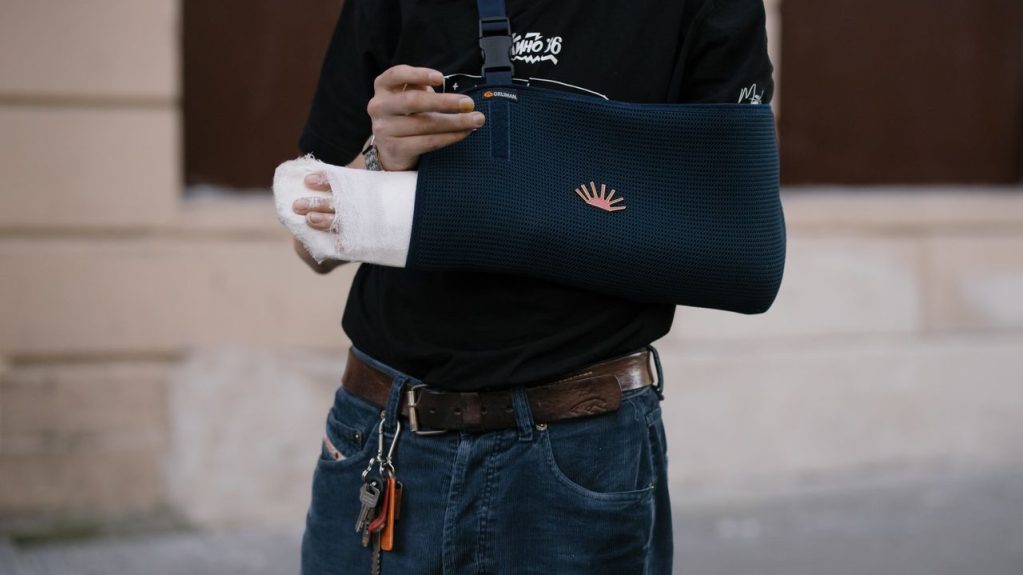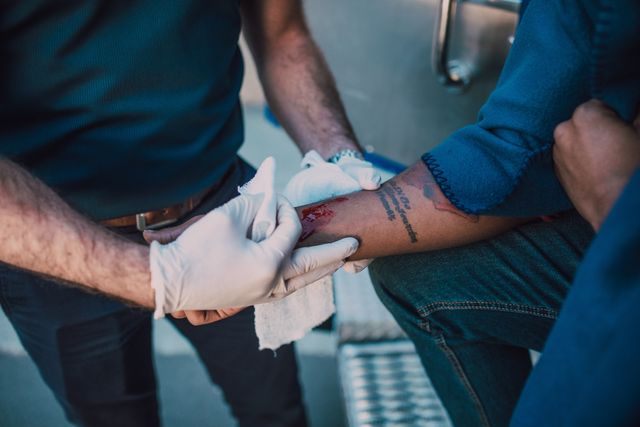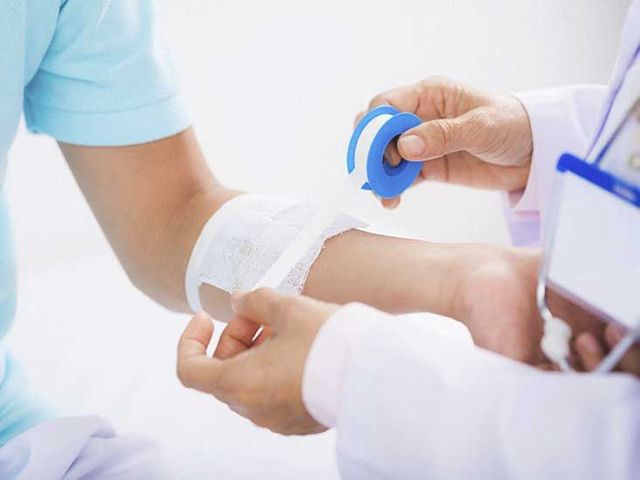Bandages are a very popular item for many reasons. They serve a dual purpose with their adhesive and their absorbent qualities: making them perfect for minor injuries. Which might otherwise require a more field-intensive dressing or those which have excessive bleeding. Bandages are also one of the most versatile first-aid products around with many aesthetic applications as well. You can use them to hold pressure on an open wound or to adhere non-adherent dressings to the skin. Bandages help to hold together rolls of tape or gauze or to create an open dressing on an area. A Bandage arm closed dressing would be inappropriate.
Roller Bandages
Many accidents and injuries can happen in the home. If you’ve hurt your arm and need support, you could try a roller bandage. A bandage will help protect the skin from damage and you can also use it to cover a dressing or to support a sprained or broken arm.
To Bandage an Arm:
- Place the bandage over your arm.
- Pull the end of the bandage under your armpit and hold it firmly.
- Tie the bandage into a knot or bow at the top of your shoulder.
- Smooth out any folds or wrinkles in the bandage material.
A roller bandage helps to support a sprained arm or to retain a dressing in place.
Kinds of Roller Bandages For Bandage Arm
Open-Weave Material Bandages:
These bandages will come in rolls of fabric that you can cut into any size you want to fit your wound. Also, you can use these bandages for small cuts and burns. Sometimes they’ll even come with an adhesive so all you need to do is unroll the bandage and place it on the wound. You may also find these bandages in a tubular shape with a hole in one end so you can pull it out.
Elasticated Bandages:
Roller bandages are a type of elastic bandage that we use in sports medicine and related fields. You can cut off roller bandages to the desired length, and these are typically secure with a roller mechanism. These types of bandages are generally useable for short-term support and are usually applied directly to the skin.
Crepe Bandages:
These cotton-thread bandages have a thick bandage and elastic covers them. These are very absorbent and breakable into pieces. They are safe for use on almost the whole body and work wonders on cuts and scrapes.
Method to Apply Roller Bandage
Medical professionals use Roller bandages to help maintain the reduction of a fracture. You can apply them at home to help comfort and support the injured area.
- Put on a pair of latex gloves and make sure the roller bandage is clean and sterile. The best approach is to apply the bandage to clean skin.
- Place the roller bandage with one hand while pulling out the tails with the other.
- Start wrapping at least 5cm above the break, being careful that you place the bandage around the limb with no twists in it.
- Roll the bandage towards the break, making sure that when it touches the skin, it doesn’t move it or cause discomfort.
- Tie off with a non-slip knot near where you started.
- Finally, remove the bandage carefully so you don’t harm your skin, then wash your hands thoroughly as you may have come into contact with bacteria during the application.
- You should change the roller bandage every 24 hours or if it loses its elasticity.
Triangular Bandages for Bandage Arm
It is not an uncommon sight to see triangular bandages used to support a sprained wrist or first and second-degree burns. While also being able to perform double duty as bandages for large wounds. Cotton or crepe triangular bandages serve a number of medicinal functions. The most popular is creating slings for physical injuries, or as temporary supports and splints. Triangular bandages are very portable because of their small size. You can carry them easily in first aid kits, backpacks, etc.
– You can use them to hold a splint or a bandage in place.
– Are good for creating a sling for a patient’s arm, leg, or anywhere else.
– Are impromptu headbands and you can also use them in the same way as cloth bandages.
– You can use them to stop some types of bleeding.
– Can cover wounds, but only if they are not too large.
Tabular Bandages for Bandage Arm
The tubular bandage can be used for a variety of moderately sized wounds & has a material width of 1″ (25.4mm), approximately half the size of the standard (2″) bandage. While these bandages may be less versatile than the other two bandage types, they have a place in certain environments. Their main advantage is their ability to cover large areas of skin but, because the tube is entirely rigid and holds no stretch. You can use it only on relatively small body parts. Such as wrists, ankles, and fingers.
Therefore, they are typically used on limbs, such as arms and legs, as well as feet & hands. Where you can apply them in a spiral fashion to ensure a secure covering. In most cases, tubular bandages are useful to support a sprained or broken limb. They provide support without offering flexibility. This is why you can use them to stabilize a fracture. You should use the bandage with a splint to keep the injured body part immobile while in use.
Final Thoughts
Bandaging is the first aid treatment that stops bleeding and protects the wound from contamination. Bandaging is by far the most common way to treat cuts, grazes, and other wounds. However, it is also one of the least well-understood first aid skills. We aim to provide a guide that is simple, straightforward forward, and easy to use. The purpose of this guide is to provide a clear understanding of the uses of different bandages, how to select the best bandage for a particular injury, and how to apply them effectively.
Recommended Reading:


